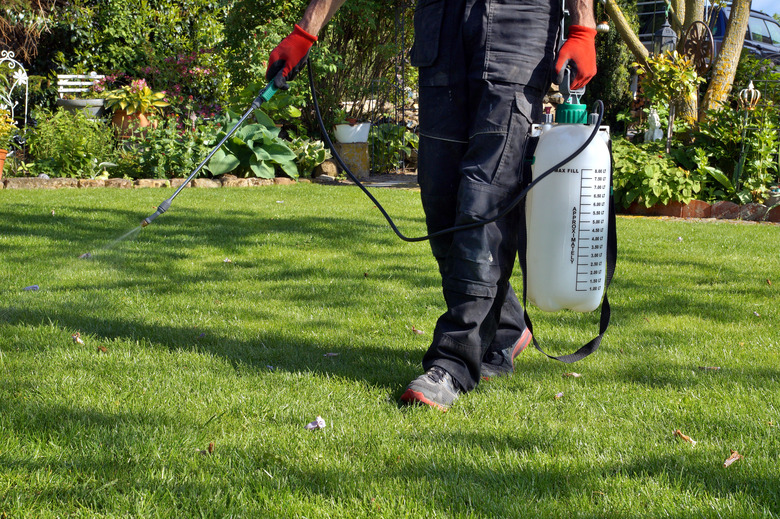The Best Time Of Day To Apply Weed Killer
Some weed killers work best when applied at certain times of day, but for others timing has little or no effect. Knowing whether you're using a pre-emergent, post-emergent, systemic or non-systemic herbicide helps you determine the proper timing for application. Your climate is also a factor in the best time of day to apply weed killer.
Types of Weed Killer
Herbicides are post-emergent or pre-emergent. Post-emergent herbicides control existing weeds, and they can be systemic or non-systemic. Systemic herbicides work by moving through plants to their roots, and they're most effective when the plants are actively growing.
Non-systemic herbicides damage plant tissues, and they can be applied at any time of day. Pre-emergent herbicides are also effective when applied at any time of day. These herbicides create a chemical barrier in the soil that prevents weeds from appearing.
Applying Systemic Herbicides
Systemic weed killers work best during the growing season, and they don't work well when weeds have stopped growing and become dormant. Applying systemic herbicides at the peak plant growth times during the day increases the herbicides' effectiveness. Plant growth speeds up and slows down over the course of a day, depending on light level, temperature and the local climate.
Warm Climate Application Times
Early morning and late afternoon are the best times for applying systemic herbicides in summer in warm climates, such as U.S. Department of Agriculture plant hardiness zone 7 and warmer. Don't apply herbicides around midday or early afternoon in summer. Midday heat causes plant growth to slow down, and the herbicides quickly dry out on the leaves, which reduces the amount of herbicide weeds absorb.
In winter in warm climates, weeds often continue to grow. At this time of year, the best time of day to apply systemic herbicides is the middle of the day, when the temperatures are highest.
Cool or Cold Climates
Systemic herbicides work best when applied late morning, midday and in the afternoon in cool or cold climates. Plant growth slows down at dusk and speeds up again as the sun rises the following day. Heavy early morning dew can cause herbicides to run off, so it's best apply them after dew has evaporated.
Applying Herbicides for Broad-Leaved Weeds
Systemic lawn herbicides for broad-leaved weeds work best within certain temperature ranges. Herbicides for broad-leaved weeds control many lawn weeds but usually don't harm grass or grassy weeds. When temperatures are too low, these herbicides may not be effective. When temperatures are too high, they can damage turf grass. During cold or hot times of year, wait until the daytime temperature is within the correct range indicated on the label before applying lawn herbicides for broad-leaved weeds.
Dicamba, mecoprop (MCPP) and 2,4-D are some common herbicides for broad-leaved weeds. These work best at temperatures between 50 and 85 degrees Fahrenheit. In cool or cold climates in spring or fall, wait until the warmest part of the day to apply them. In warm climates in summer, avoid midday heat, and apply the herbicides in the morning or late afternoon.
Weed Killer Safety
Herbicides are toxic chemicals that can cause injury to you and kill other plants that you want to keep alive. Wear long pants, a long-sleeved shirt, garden gloves and safety goggles when using herbicides, and apply them on a dry, still day to keep the weed killer from spreading. Many herbicides are harmful to plants you wish to keep, so either don't spray near them, or protect them with cardboard.
